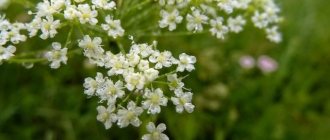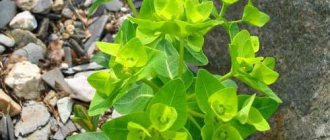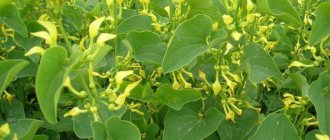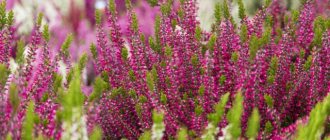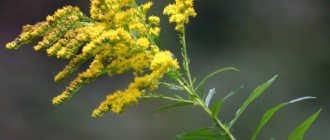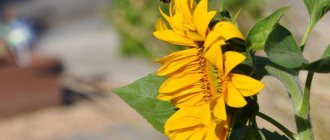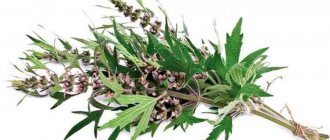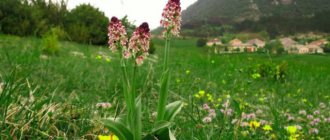What does cocklebur look like?
The annual plant belongs to the Asteraceae family and is also found under the names burdock, agrimony, or scarecrow. The annual height is usually about 1 m, its stem is straight and fleecy, covered with carved triangular-shaped leaves. The latter can reach 10 cm in diameter.
At the end of July, inflorescences appear on the stems of common cocklebur - slightly elongated, spike-shaped heads. In September they turn into spiny seed pods.
Common cocklebur is a toxic annual, but beneficial in small dosages.
In the wild, the plant can be found almost all over the world, mainly in warm regions. Common scarecrow grows in Europe and North America, in the southern regions of Russia, in Central Asia, Australia and Africa. Most often, the annual plant chooses moist and light sandy soils on the banks of reservoirs; it is also found in vacant lots, garbage heaps, near fences and along roadsides.
Important! The common cocklebur is a poisonous plant. In folk medicine, it is used only in small dosages and according to proven recipes.
Common cocklebur: description
The cocklebur comes from the Aster family of the order Asteraceae.
Its appearance has specific features that distinguish the plant from its genus. The stem is straight and stiff with a red or gray tint and many hairs. The height of the cocklebur reaches a considerable size - more than one and a half meters. The leaves grow in a heart shape and have up to five leafy, coarsely toothed lobes with petioles. This part of the plant grows up to 10 cm in length and is green on top and light green below. Cocklebur flowers form spike-shaped axillary inflorescences consisting of monoecious heads. The fruits have an oblong, round shape and are enclosed in a hard shell. Flowering begins in mid-summer, and the fruits ripen only in September.
Common cocklebur is popularly called differently: goiter, zabryk, fearwort or sheep's burdock. These names are associated with diseases that are treated with the help of the plant. Thus, the plant has long been used as a remedy to combat thyroid problems (goiter).
bird cherry - beneficial properties and contraindications
What other name can you find cocklebur under? Not many people are familiar with the medicinal properties and contraindications of a plant with this name. What about goiter? It was also popularly called fearworm, sheep's burdock, and brigand. Perhaps someone has already recognized this unpretentious plant, which readily inhabits wastelands. The leaves of the plant are large, jagged, and light green in color.
Flowers form heads collected in inflorescences; they appear in the second half of summer. The fruits ripen closer to autumn. Fatty oil, which is extracted from them in sufficiently large quantities, can be used for the production of drying oil. And if you clean it, the oil becomes pleasant to taste and healthy.
The cocklebur is an annual representative of a fairly large family of Asteraceae. It is characterized by a grayish-green branched stem with hard and short hairs, which often reaches a height of 120 cm. At the base of the stem, the leaf plates are heart-shaped, they have three lobes with serrated cuts in the middle. The leaves of the cocklebur are green on top and lighter underneath. The leaves reach 10 cm in length.
The inflorescences are monoecious, with the male inflorescences formed by a large number of spherical flowers (the involucre is represented by one row of narrow leaves), and the female inflorescences are two-flowered, with a fused-leaf involucre. Flowering begins in July and continues until September.
The fruits of the plant are represented by elongated, prickly and slightly rounded burdock achenes, reaching 1-2 cm in diameter. The fruits are grayish-green or green. Fruit ripening occurs in mid-autumn.
You can grow cocklebur on your site from seeds, which many plant growers use, knowing about the medicinal properties of the herb. In the natural environment, the plant prefers wastelands and littered soils, and it has reached its greatest distribution in the east and west of Siberia, Russia, many countries in Africa and Asia, as well as in America.
Did you know? The names of many medicinal plants are directly related to their healing properties and the ailments they are used to treat.
Therefore, it is not surprising that the described herb received such a strange name, because it has long been fighting various skin diseases: “cocklebur” - “bad skin”. This common weed is grayish-green in color and covered with short hairs. Its height reaches up to 70 cm, the leaves are three-lobed and incised-toothed.
The cocklebur is a unisexual plant. Male inflorescences are multi-flowered, while female inflorescences are two-flowered. The thorny weed looks unsightly and grows in littered soils.
The chemical composition is rich in flavonoids, fatty acids, sterol and resin. The entire Asteraceae family is not capable of possessing such characteristics. The medicinal properties of the herb will mainly be used to treat the thyroid gland. And an analgesic effect for pain of varying severity.
The presented grass has long been considered a simple weed; it is unpretentious and grows well in different types of soil, and is difficult to weed out. Due to its widespread distribution in different climatic zones, the prickly, goiterous, sheep's or common cocklebur has several alternative names:
- not required;
- cholera, burr grass;
- goiter;
- iodine herb;
- fear.
Chemical composition of cocklebur
The medicinal properties of the annual plant are due to its rich composition. The following substances are present in common cocklebur:
- iodine;
- ascorbic acid;
- flavonoids and antioxidants;
- essential oils;
- saponins and tannins;
- dyes;
- alkaloids;
- resins and fatty oils.
Traditional medicine uses not only the leaves and stems, but also the roots of the common cocklebur, as well as its seeds, to treat ailments. All parts of the plant have medicinal properties.
Horrorwort contains high amounts of iodine
Contraindications
Almost any medicinal plant has some side effects, and in this regard, the common cocklebur is no exception. The medicinal properties of this plant are very extensive, but we should not forget about possible contraindications due to the fact that it is very toxic. If the maximum permissible dosage is exceeded, it is imperative to immediately call a doctor who will carry out a number of measures aimed at cleansing the stomach.
Treatment with cocklebur is contraindicated:
- for constipation;
- pregnant women;
- with individual hypersensitivity;
- with exacerbations of the gastrointestinal tract.
Useful properties of cocklebur
The mildly poisonous common cocklebur is used to treat many acute and chronic diseases. In particular, the plant:
- has anti-inflammatory and antimicrobial effects;
- acts as a natural diuretic;
- improves blood composition and reduces temperature;
- has a sedative effect and has a positive effect on the nervous system;
- acts as a good pain reliever;
- has a hepatoprotective effect and protects the liver;
- stimulates good immune function;
- helps with joint diseases.
The medicinal herb is used to treat kidneys and inflammation of the bladder. Fearworm is used for diseases of the respiratory organs, skin ailments and gynecological inflammations.
Medicinal cocklebur is used to treat joint, colds, and digestive ailments
In oncology, cocklebur is valued for its antioxidant properties. It is a good prevention of cancer, and with the permission of a doctor it can also be used in the treatment of tumors.
What is the secret of health?
In alternative medicine, many different remedies based on cocklebur are used to treat diseases. You can take decoctions orally, but only in the indicated dosage, otherwise the body's reaction will be ambiguous. Let's look at the best recipes.
Recipe No. 1
Prepare a universal decoction from cocklebur. It is suitable for both oral and external use.
Compound:
- 0.25 l of filtered water;
- 1 tbsp. l. chopped cocklebur.
Preparation and use:
- Boil filtered water and pour it over the cocklebur.
- Mix carefully, put the liquid on the fire and simmer over moderate heat for a quarter of an hour.
- Then cover with a lid and leave for another hour.
- You need to take this decoction up to five times a day, 1 tbsp. l. It helps in the treatment of urolithiasis, rheumatism, and dermatological ailments.
Recipe No. 2
Some people are familiar with such unpleasant symptoms as ringing in the ears and head. A herbal remedy prepared from cocklebur will help get rid of these signs.
On a note! People who have tried this medicine say that the effect will be noticeable within a couple of weeks. Visual acuity also improves and hearing function is normalized.
Compound:
- 5 tsp. calamus root;
- 1 tsp. cocklebur seeds.
Preparation and use:
- Grind the indicated ingredients and mix.
- Take 1 tsp in dry form three times a day. Be sure to drink filtered or boiled water without gas.
Recipe No. 3
Unfortunately, humanity has not yet come up with an effective pill that would immediately treat cancer. Herbal remedies can be used in the treatment of malignant diseases of the thyroid gland. Of course, such actions must be coordinated with a specialized doctor.
Compound:
- 2 tbsp. l. river duckweed;
- 1 tbsp. l. cocklebur;
- ½ tbsp. l. chopped nut leaves;
- 0.5 liters of alcohol or moonshine.
Preparation and use:
- Grind all the ingredients and put them in a glass container.
- Fill with alcohol or moonshine, only strong.
- Stir, seal tightly with a lid and send for 10 days in a dark, secluded place to infuse.
- It is recommended to use this infusion three times a day, 1 tsp.
On a note! Cocklebur seeds are also used to treat cancer of the throat or larynx. They are fried over a fire. During the combustion process, smoke is released, which is what you need to breathe.
Damage from cocklebur
The annual plant contains toxic substances, glycosides, so if used improperly, fear beetle can be harmful. It is mainly dangerous in its fresh form, and during drying and heat treatment toxic substances are destroyed:
- The average daily dosage of medicinal fearworm is about 3 large spoons of decoction or infusion.
- When using cocklebur tincture with alcohol, the daily dose is reduced to 15-30 drops.
- An overdose of the drug may cause digestive disorders, allergic reactions, nausea and headache.
We recommend reading: The benefits and harms of tea made from lingonberry leaves and berries
Before using a medicinal beetle, you need to make sure that it does not cause individual intolerance. For the first time, the product is used in the amount of a few drops, after which you need to wait 2 hours and check if a negative reaction occurs. Before using the plant externally, you need to apply the tincture or ointment to the crook of your arm and see if any redness occurs.
You need to use ordinary fearwort with caution, it contains toxic substances
Recipes with cocklebur and dosage for treatment, how to take it
To prevent and treat a whole list of diseases with the help of cocklebur, it is important to be sure of the correct dosage of tinctures and decoctions.
- Intestinal upset, dyspepsia
1 tbsp. dilute a spoonful of dried leaves in 200 ml of hot water and cook over moderate heat for 20 minutes. The decoction should be infused for at least an hour, and then it should be consumed a glass three times a day.
The decoction is also useful for manifestations of hemorrhoids.
A decoction of seeds and fruits is effective against dysentery.
- Goiter and other thyroid diseases
1 tbsp. A spoonful of cocklebur is diluted in 0.5 liters of boiled water and left for several hours. Then strain and drink half a glass three times a day.
It is treated by mixing dried cocklebur with calamus powder in a ratio of 1:5. 1 teaspoon of the medicine is diluted in a glass of water and consumed 2-3 times a day.
Article on the topic: Peumus boldo - beneficial properties, description
The juice of the cocklebur herb is taken orally, 30 drops before eating, for a month.
The decoction is made by adding 2 teaspoons of dry herbs to a glass of boiling water. The composition is left to infuse for 2 hours and then filtered. The liquid should be drunk half a glass 2 times a day before meals. The maximum duration of the course is 2 months.
1 tbsp. A spoonful of dry cocklebur is mixed with a glass of boiling water. After cooling, the medicine is ready for use. You need to drink half a glass 2-3 times a day.
Treatment for asthma is similar to treatment for throat cancer. Inhalation and smoking of plant seeds has a beneficial effect on the respiratory system.
Contraindications for cocklebur
The common cocklebur has some contraindications. It is strictly not recommended to use the herb:
- during pregnancy and during breastfeeding;
- in the presence of individual intolerance;
- with exacerbation of peptic ulcer and pancreatitis;
- with a tendency to constipation;
- with gastritis with high acidity in an acute condition.
Attention! Giving infusions and decoctions based on common cocklebur is prohibited to children under 18 years of age; for them, the potential harm of the plant may be greater than the benefit.
Growing cocklebur in the garden
Landing in the ground
The cocklebur plant can grow on poor soils, but it grows faster in fertile soil. The area for cocklebur should be sunny. Sowing seeds in the ground is carried out in early spring or before winter in furrows 5 cm deep. Before spring sowing, it is advisable to keep the cocklebur seeds for about a month in the vegetable drawer of the refrigerator, first placing them in a plastic container with damp moss. before winter sowing . After planting the seeds in the soil, water the bed.
How to grow cinquefoil on the plot
- How to sow heuchera seeds correctly (video)
Before the onset of cold weather, the area with autumn crops is covered with organic mulch, and it is advisable to protect early spring seedlings from night frosts: metal arcs are installed over the bed, on which non-woven covering material is thrown at night.
In the photo: Cocklebur leaf
Rules of care
After seedlings emerge, they are thinned out so that each plant has sufficient feeding area. Caring for cocklebur is no different from caring for any other garden plant: watering in the dry season, loosening the soil, weeding and protection from diseases and pests, if the need arises.
When it comes to fertilizing, the cocklebur grass responds best to organic fertilizers - solutions of mullein or bird droppings. However, mineral complexes added to the soil in liquid form before flowering begin will not harm the plant either.
Ambrosia - how to get rid of the allergen
Pests and diseases
The cocklebur is extremely rarely affected by both diseases and pests.
How to drink and brew cocklebur
Traditional medicine mainly uses the common cocklebur in the form of medicinal decoctions and infusions. There are several proven recipes that allow you to get the maximum benefit from the plant without side effects.
Decoction of common cocklebur
The most popular use of common cocklebur in folk medicine is a decoction based on dried leaves. They do it like this:
- pour a large spoon of raw material into a glass of water;
- Boil over low heat for 15 minutes;
- strain the broth and leave to infuse for an hour.
You need to drink the product three times a day, 1 large spoon. The decoction helps well with intestinal disorders, diarrhea, and also with inflammatory processes.
A decoction of common cocklebur is used for diarrhea and inflammation.
Advice! Based on the decoction, you can make medicinal compresses for skin ailments. In this case, a gauze bandage is moistened in the drink and applied to the sore spot.
Cocklebur juice
Medicinal juice is used to treat diseases both externally and internally. Lightly dried fearwort is ground in a blender, and then the pulp is squeezed through cheesecloth.
Internally, to treat ailments, the juice is taken only 15 drops twice a day; the product can be diluted in 1 large spoon of water. It is best to take the medicine on a full stomach soon after eating. Fearwort juice is good for treating throat diseases and inflammatory processes in the oral cavity; it can also be used to treat furunculosis.
Externally, the product is used to treat skin diseases - lichen, urticaria, diathesis and scabies. Fresh juice can be used to lubricate insect bites; common cocklebur relieves inflammation, itching and swelling well.
Juice from the stems of common fearwort is used to lubricate skin irritations.
Tincture of common cocklebur
The healing properties of cocklebur for the thyroid gland and inflammatory processes of the genitourinary system are usually used in the form of a tincture. To prepare it, you need to squeeze the juice from dried stems and leaves, and then mix it with vodka in equal proportions.
Since the product contains alcohol, use it in very small dosages, only 30 drops twice a day. The medicine is diluted in a small amount of clean water, and the total duration of treatment with cocklebur tincture should not exceed 10 days.
Cocklebur tincture contains a lot of iodine and is useful for thyroid diseases
Infusion of common cocklebur
A water infusion of dried fearwort has strong medicinal properties. They do it like this:
- a small spoon of dry raw material is poured into a glass of hot water;
- leave covered for an hour;
- filter through cheesecloth.
We recommend reading: Amur velvet berries: beneficial properties and contraindications
Drink the infusion several sips throughout the day. The product helps well with inflammatory diseases, digestive disorders, and skin ailments.
An infusion of common fearwort helps with inflammation and digestive problems.
Application
So, in what cases do healers use prickly cocklebur? The medicinal properties and contraindications have not been fully studied, but in folk medicine it is used to relieve spasms of the respiratory tract and asthmatic manifestations. But the most important property is blood purification. The plant has the property of suppressing the growth of tumor formations. There are descriptions of real cases where herbal medicine made it possible to completely rid a person of oncology. However, it is emphasized that this only works in the early stages. And again there is a fly in the ointment: there were no officially registered cases of cancer cure with the help of toxic herbs (analogous to chemotherapy).
Use of cocklebur
Decoctions, infusions and other remedies based on common cocklebur are used to treat a wide range of ailments. Fearworm benefits:
- for kidney stones;
- for boils, eczema and dermatitis;
- for psoriasis;
- for diseases of the thyroid gland;
- with poor digestion and tendency to diarrhea;
- for colds;
- for respiratory tract ailments - from a simple cough to tuberculosis.
It is recommended to use common cocklebur, including in the form of an ointment. It’s very easy to prepare, all you need to do is:
- chop 2 large spoons of leaves and fruits of the plant;
- pour the raw material with a glass of melted fat, for example lard;
- Boil the mixture over low heat for 10 minutes, stirring continuously.
Then the product is removed from the stove and left to infuse for 2 hours, after which it is filtered through gauze. A thick ointment is applied to skin irritations and lesions twice a day - in the morning and before bed.
You can make a healthy ointment from dried fearwort and pork fat.
Important! Another method recommends for tuberculosis and asthma to heat the seeds of the fearwort in a tin container and inhale the smoke of the plant. However, before using this method, it is better to consult a doctor so as not to cause harm to your health.
Cocklebur - what kind of grass is it, photo, description, where it grows
Cocklebur (scareburst, agrimony, thistle) is an annual plant from the Asteraceae family with a straight, fleecy stem more than one meter high. It is easily distinguished from other weeds by its carved triangular leaves and spiny seed capsule, which ripens in late July.
Article on the topic: St. John's wort - beneficial properties, description
Cocklebur grows abundantly in the temperate climate of Russia on littered soils, along roads and in wastelands. Finding and drying this herb is not difficult. In addition, its seeds are found in pharmacies, often in combination with other medicinal plants.
Two varieties of this herb: the prickly needle-shaped cocklebur and the common goiterous cocklebur have long been used in folk medicine. Both types have the same beneficial properties and a number of contraindications.
Even the name “cocklebur” itself comes from the expression “bad skin” and reflects one of the main uses of the plant. The fact is that with the help of lotions from this herb they fought against dermatitis, furunculosis and other skin diseases.
Its other name is “goiter,” which indicates that the plant was used to treat goiter and other thyroid diseases.
But these are far from the only areas of application of this medicinal plant.
Collection and storage rules
For medicinal purposes, it is customary to use all parts of the common cocklebur - leaves, seeds, roots and stems. But raw materials are collected at different times, since beneficial substances accumulate unevenly in plant tissues:
- The leaves and stems of fearwort are best harvested in late July or early August. During this period, the annual blooms, and its above-ground parts contain the maximum amount of valuable substances.
- The seeds of the plant ripen in round boxes closer to autumn, and they are usually collected at the end of September.
- The roots gain maximum nutrients in mid-October - they need to be dug up several weeks before frost.
Dried scarecrow has almost no toxic substances in its composition
The collected insecticide is usually dried naturally. The raw materials are laid out in a thin layer in a warm room, away from sunlight, and wait until the moisture has completely evaporated; the dried parts should begin to crumble. After this, the common cocklebur is laid out in paper bags or wooden boxes and stored in a dry and dark place. The herb retains its beneficial properties for about 3 years, then the raw materials will need to be collected again.
Rules for collecting raw materials - grass, seeds and roots
Common cocklebur retains its medicinal properties only with proper preparation of plant materials. Different parts of the grass crop (roots, stems, seeds) accumulate useful components at different periods of the season.
The tops of plants are cut off during the flowering period (June-August) and dried in dryers at low temperatures, because Iodine is not preserved when overheated. The finished raw materials are placed in cardboard boxes or paper bags. The shelf life of raw materials, subject to storage conditions, is up to 3 years.
Seed material is collected from July as it ripens. Most of the seeds are used to make oils. In the fall, the roots are dug up and removed using gloves, because... The plant crop is classified as poisonous.
Photo of the cocklebur plant
Common fearwort has quite characteristic characteristics, and it is not difficult to recognize it among other annual herbs. But in order to confidently distinguish a medicinal plant, it is worth studying a photo of cocklebur.
The flowers of the fearwort ripen after mid-summer
Common cocklebur is considered a weed and can grow in vacant lots
The flowers of the cocklebur are a bit like thistle flowers, but they are elongated in shape.
Other dosage forms
Probably no other plant is used in such a multifaceted way. Especially for those who are not familiar with this herb, here is a photo of cocklebur. The medicinal properties and contraindications need to be studied further, but even today herbalists can offer a huge number of ways to use it:
- Alcohol tincture. It can be easily stored for a long time. To do this, simply dilute the juice with alcohol in a 1:1 ratio. You can use it as a juice, doubling the dosage.
- Ointment is a very convenient form for external use. You will need to chop 1 tablespoon of fruit and mix with 200 g of duck fat. Boil for 1 minute and strain. Now you can use it as compresses.
Indications for use
Medicines made from the above-ground and underground parts of this plant are used in the treatment of the following diseases:
- laryngeal and skin cancer;
- thyroid diseases;
- bronchial asthma;
- joint diseases;
- malaria;
- skin diseases;
- tuberculosis;
- cold;
- bronchitis;
- diseases of the genitourinary system;
- dysentery.
Goiter is also used in the treatment of gynecological diseases. Products based on it are recommended to be used for mastopathy, fibroids and painful menstruation.
External use
May cause an allergic reaction, so do not forget to test first by applying a small amount of the product to the crook of your elbow. For various skin diseases in folk medicine, the juice of the plant is used externally and a decoction internally. In this case, it is necessary to take into account the effects of cocklebur, medicinal properties and contraindications.
Reviews today are quite difficult to find; apparently, the plant is not used so often. Herbalists recommend using lotions with plant juice for urticaria and scrofula, mycosis and neurodermatitis, lichen and rashes, acne and scabies. If rashes and pimples are spread throughout the body, then you can take baths.
